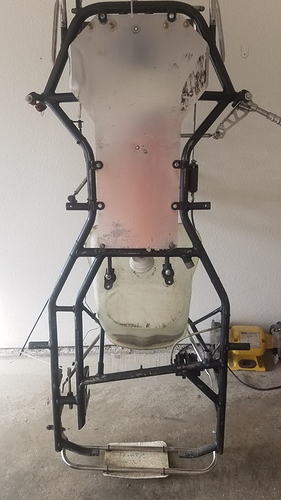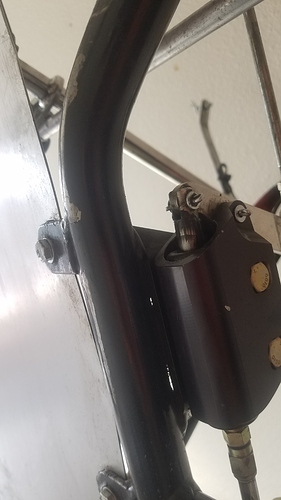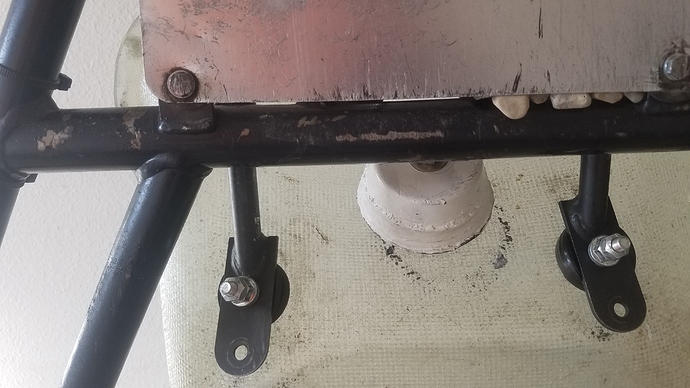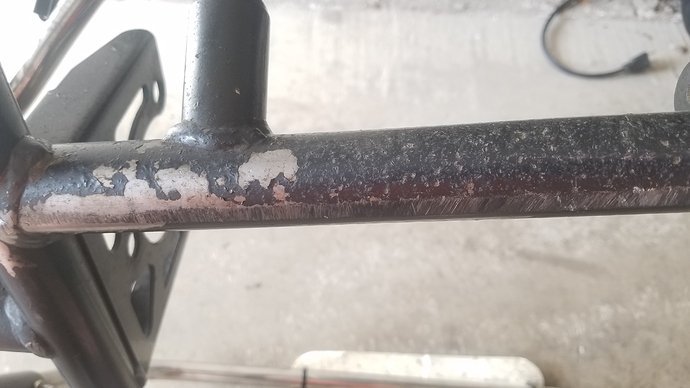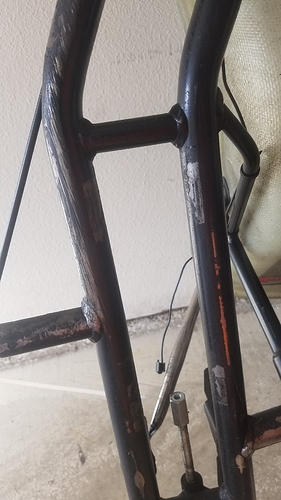Definitely Stepanova. He can take a wooden board with wheels and drive it to the World Finals. Total beast mode.
Nah, that’s minor. Have it checked for straight/true and send it.
If the Merlin is a European chassis, I’ve heard the same rumors. I’ve heard that you’re only allowed 2 frames per event in international competition. They make their frames out of, I’ve heard, 1018 seamless, drawn over mandrel, mild steel. It has the same, I think it’s called stress strength, numbers as 4130 condition N Chrome Molly. It’s cycle life is significantly less. Essentially, they do sag over time. I don’t know if there’s a cure for this. If there was, I can’t imagine them throwing away frames.
I’d really love to see measurable, repeatable analysis on this stuff. Including the relative flex, damping and spring response of chassis frames. I think John Denman might have compared metals in the 90’s, early 2000 if I recall correctly.
This mantra of US vs EU chassis really is hearsay, on many points. I’d label it outright misinformation. There’s a series of reasons that factory teams replace chassis.
One is simply that they are leased out and the next customer expects a new one.
Another, the chassis is going to be torn down between races anyway, as a team with adequate resources it’s easier to just replace it and sell the old one on.
Third you can say it’s part of a vanity game. Driver driver (or their parents) see, so they do.
Left rail sag is definitely not a European chassis specific thing.
I’m pretty sure the Europeans are using chromoly. At least they were last time I talked to a chassis manufacturer directly, 2 years ago.
The way I look at it is find a chassis you like, then drive it until it’s falling apart or it starts getting worn beyond what can feasibly be fixed. My team started taking our chassis to a shop that specializes in straightening out frames and truing them. It’s not that much and is just a little added insurance for the next season. I know some guys who have gone there for years and their kart is still as straight and fast as it was when new.
In your experience, how long do you think it takes a chassis to “wear out” on average.
I’m looking at a used 2018 OTK chassis that’s been run for a season. It has all new bumpers and side pods but you can definitely tell the chassis has been run. Things like some scraping on the bottom of the kart and wear on the left rear where the engine mounts were.
With a new engine, will a chassis like this still be competitive at a regional level for another season or two or would it be better to look for something used less or a new chassis all together?
depends how much “use” is visible. Has the bottom of the frame been ground/scraped enough to actually create flat spots on the tubing?
Generally a straight, cared-for 2018 chassis would be a perfectly acceptable chassis for regional competition.
As long as it’s straight and the bottom rails aren’t totally flat, it should be absolutely fine. I’ve raced OTK karts that are 2-3 seasons old competitively at national races before with no issues.
I traded my well-used 2016 Exprit in for a brand new 2018 Kosmic at the beginning of the year and went the same speed with virtually no difference in feel from one to the next.
Looks basically brand new to me. It has skid plates which is always a good sign.
Sexy livery. Good looking machine.
I plan to do an entire series on this topic.
Basically, can you take a very old/very worn/very bent chassis and make it competitive? Locally, Nationally? I think it will be a fun task and I will be sure to link back in here when the first episode is listed.
-Your Pal
Ronald Swift.
oh hell…there goes the board with this guy joining!!! 
